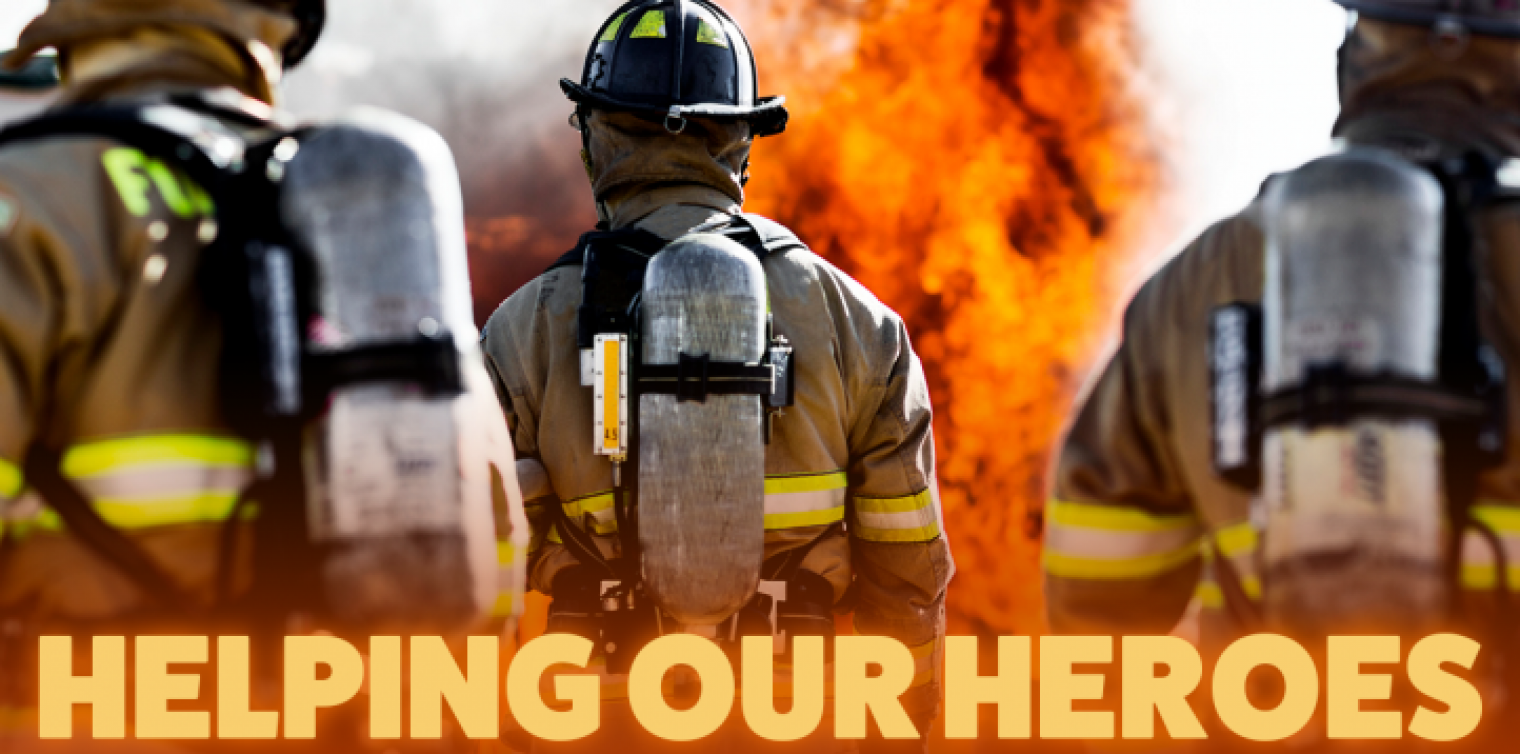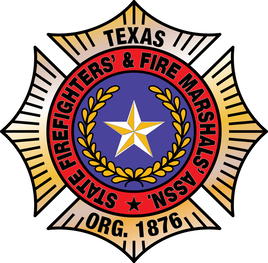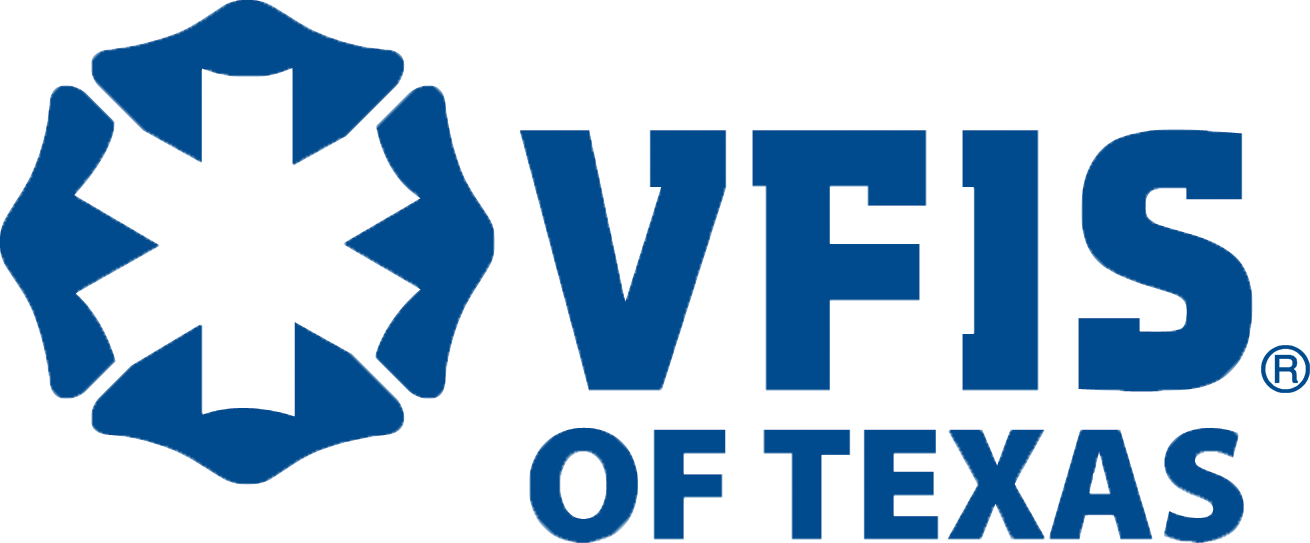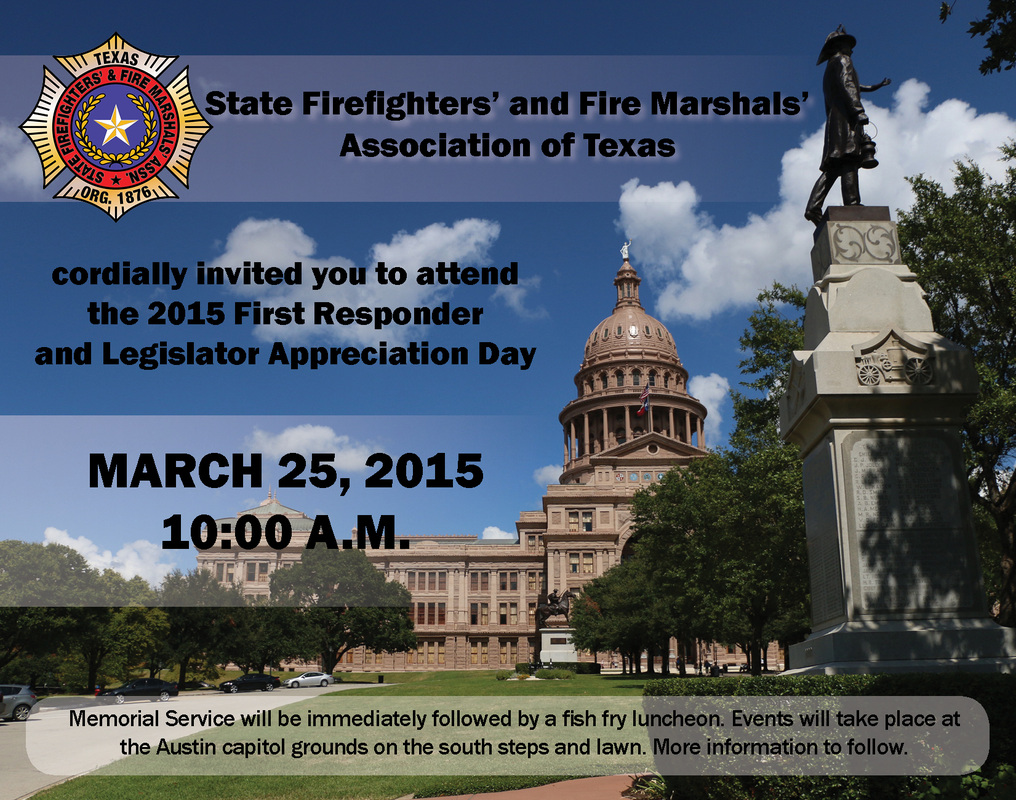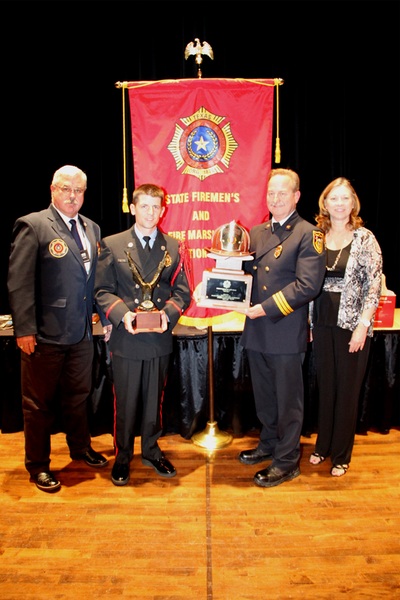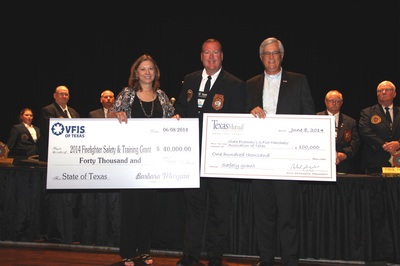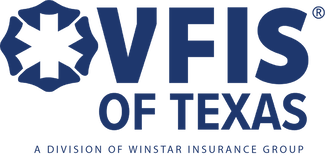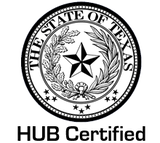|
* COVERAGE EFFECTIVE DATE IS AUGUST 1, 2019 *
OPEN ENROLLMENT FOR EMPLOYERS AND INDIVIDUALS TO ENROLL IS JUNE 1ST TO JULY 15TH *We have reached our 500 member minimum threshold for coverage to go into effect August 1st! However, if you miss the July 15th deadline, you can still enroll at a later date. See schedule below: Deadline Effective Date 8/15 9/1 9/15 10/1 10/15 11/1 11/15 12/1 12/15 1/1 ENROLL NOW SFFMA and VFIS of Texas have secured a Group Cancer & Critical Illness Insurance Plan that provides 24 hour (on the job and off the job) coverage. This Cancer & Critical Illness Insurance is available to employers (paid & volunteers) and individual members. Highlights Include:
To Enroll:
Download a Sample Policy Proposal for Detailed Plan Info *Initial diagnosis of covered critical illness must occur while the insured is covered under the group policy. If the insured has a reoccurrence of a prior covered illness after coverage begins then the plan pays under the, Reoccurrence Benefit: If a critical illness benefit is payable and there is a subsequent diagnosis or recommendation for the same critical illness, a reoccurrence benefit equal to 25% of the coverage amount is payable if the insured meet both of the following: The insured has been continuously insured under the group policy between the initial and subsequent diagnosis or recommendation. The insured has served a 12-month treatment free period during such continuous insurance.
0 Comments
We had a great time at the 2015 First Responder and Legislator Appreciation Day breakfast at The Austin Club AND with State Firefighters' and Fire Marshals' Association of Texas at the Texas State Capitol for the fish fry and Fallen Firefighters Memorial Expansion unveiling. We're glad so many of you could join us. Enjoy these photos from Wednesday. (Photos courtesy of Susan Heil)
The 2015 First Responder & Legislator Appreciation Day will be held on Wednesday, March 25. The day will start with a kick-off breakfast at 7:30am at the Austin Club sponsored by VFIS of Texas. SFFMA as well as other emergency service groups will speak about their legislative agendas. Space is limited so if you would like to attend the breakfast, please RSVP by CLICKING HERE or by contacting Kash Sarkaria at ksarkaria@vfistx.com or (512) 628-5047 by March 18th.
Following the breakfast, we will head to the Capitol to meet with legislators and their staff to ask for their support on key bills that relate to the fire and emergency services. At 10:00am, the Fallen Firefighter Memorial Service will be held to honor those that have lost their lives protecting our great state as well as the unveiling of the new memorial expansion. After the Memorial Service, a complimentary fish fry luncheon will be served on the Capitol grounds. More time will then be available to again visit with legislators. For more information on the day’s events, contact Chris Barron at cbarron@sffma.org or (512) 454-3473. Click here for the VFIS of Texas breakfast invitation: Click here for the SFFMA invitation for the day’s events: We look forward to seeing you there! 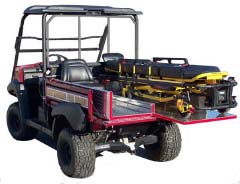 Written by Roy C. Mercer (VFIS of Texas Director of Training, Education, and Safety) for Texas Firemen magazine. 2014 Texas Firemen magazine is available for SFFMA members. You can become a member by signing up at www.sffma.org. The commonality between our emergency vehicles and all-terrain vehicles and utility vehicles (ATVs/UTVs) is that “they are still vehicles”. Providing a fast, fun to ride, low cost, easy to deploy, and navigable option, ATVs/UTVs are becoming more noticeable in emergency service organizations (ESO) across our state. Each ESO should place a high-level of seriousness towards the driver’s experience and training on this response vehicle. Additionally, the ESO should equally recognize that conversion of an ATV/UTV to an emergency vehicle encompasses a great deal of requirements. The ESO should consult the manufacture before embarking on the conversion process by adding a tank or an EMS skid unit themselves. Utilization of ATVs/UTVs in our service has been around approximately 30 years now. As ATV/UTV equipment evolved, personal protection concerns among manufactures has increased. Even with warning safety labels and safety advertisements, personnel are still rejecting these important messages and are treating ATVs/UTVs as recreational vehicles. Furthermore, ESO’s are placing personnel in the driver’s seat for emergency response while never considering the education processes and/or maintenance needs before deployment. Emergency service organizations must perform an assessment to identify proper personnel protective equipment (PPE) purchase needs and/or offer the appropriate safety equipment for the response. The State of Texas requires helmets worn to meet the United States Department of Transportation standards. Additionally, gloves and goggles must be worn while transferring these vehicles across public terrain (Texas law, Section, 663.034). Emergency service personnel are using these ATVs/UTVs like the bicycle theory: Once you ride one once, you’re good to go for life. This theory does not help reduce liability for the ESO. The ESO cannot ASSUME anything; personnel must be aware of dangers when driving, operating, and/or riding in or on these vehicles. Many causes of accidents on ATVs/UTVs fall into two categories: 1) Operator behavior and 2) Equipment failure. The U.S. Consumer Product Safety Commission, (Sarah Garland, February 2013), reported that from January, 1982 to December, 2011, 11,688 ATV/UTV deaths transpired across the U.S., with 571 happening in Texas, which is one of the highest death tolls of any state. Sadly, these fatalities occurred across all age groups. 35% of deaths occurred in those 16 years and younger, meaning that 65% of ATV/UTV fatalities featured victims over the age of 16. These numbers are shouting to the emergency organizations across the state, and we as ESO’s should take preventive proactive measures to avoid becoming part of such tragic statistics. We encourage the implementation of preventable measures be done early, before the deployment of an ATV/UTV. As a risk management process, the utilization and research for the types of duties the vehicle is to endure are a high priority when developing specifications for the purchase of ATVs/UTVs. ESOs tend to gravitate towards the purchase of utility vehicles because it offers off and on road terrain diversity during operations at a low cost. In addition, these vehicles offer multiple passenger compartments allowing two – four people to ride in them. UTVs also feature beds capable of carrying skid units, a gas powered water pump, an attack line(s), and a tank of water; usually 50 – 65 gallons capacity (figure 1) for fire suppression activities. Additionally, removing the fire skid units allows diversity for converting the vehicle into an EMS vehicle, allowing for patient transport and medical supply to be place on-board (figure 2). Our recommendation is to consult with a professional manufacture of these vehicles, making sure that the load capacity is within the vehicle limits. Personnel and all the safety equipment should be included when determining this capability. When consulting with the manufacture, the ESO’s should be very specific about the equipment carried on the AVTs/UTVs. Some example considerations are night and day operations, spot light bars placed on top, flashlights and mounts, PPE, and extra fuel tanks for long distance responses. If the ESO utilizes these vehicles as an emergency transport vehicle, all safety equipment should be on-board for the patient and family members. At a minimum, two personnel should respond within the vehicle at all times. Communication equipment should also be available as the vehicle travels to remote locations where signals may or may not be present, depending on location. First aid and/or survival kits need to be on-board as well as suntan lotion, flame blankets, extra drinking water, fire extinguisher, responder medication and snacks, considering the activity and terrain they will be traversing. Determining the appropriate type of PPE base on terrain operations is very important for the safety of personnel. For example, if your organization responds in a heavy wooded or weeded area, you may consider heavier leg and arm protection be worn. Additionally, a DOT certified helmet with built in face shield or eye protection, as well as sunglasses in bright areas, and gloves should be considered. What about the terrain? Geo mapping is very important, giving the preplanning of the terrain a higher priority. The ESO will be traversing in areas that are not common. The development of preplans of recreational locations are crucial; where people hike, ride mountain bikes, horses, dirt bikes and other entertaining activities. When traveling off-road, most recommend traveling on dirt and/or areas traveled by other vehicles, including rutted and/or worn terrain. If this cannot be accomplished, a partner should walk in front of the vehicle and determine whether the vehicle can proceed forward in the unknown area safely. Remember, we usually respond down roadways within our district. When we go off-road in an unknown terrain, we could accidently travel in high water areas or fall from a shift of dirt or rock formation causing more injuries and even death. Annual training is necessary, and identifying the risks associated with ATVs/UTVs is no different from other emergency vehicles within our fleet. Traversing over different types of terrains, the correct operations and maintenance procedures, personnel performance measures, and the proper use of PPE are very important subjects within the educational process. At a minimum, each person should attend 4-hours of classroom with another 4-hour of driving an obstacle course (off-road preferred). The classroom portion should cover the latest accident trends, safety equipment, terrain identification and/or mapping, maintenance processes, operation, driver qualifications, and lastly, trailer operations, which are equally important. Skill practice should consist of a preventive maintenance checklist, a cone driving course, flat field and/or level ground area, on-road surface and then an off-road guided experience (figure 3), and a post maintenance check and cleaning be performed. Lastly, all ATVs/UTVs are important members of our vehicle’s fleet. Personnel should be aware of the risks associated with the utilization of these vehicles and response areas they will be traversing. All safety equipment worn and standard operating procedures developed and enforced should be reviewed by all personnel. These vehicles are not for recreation. They are for performing an important task, and the ESO’s implementation of best practices before the deployment of these vehicles is a proactive approach. Remember, the safe response begins before the response. The title of SFFMA State Firefighter of the Year and SFFMA State EMS Responder of the Year are given to only an elite few. To be nominated for these awards and to be selected from so many is quite an honor.
Each individual nominated for these awards is recognized for their strong values, leadership, vision, heroism and dedication. Congratulations to all of the nominees and to David Wade, 2014 SFFMA State Firefighter of the Year and to James Carr, 2014 SFFMA State EMS Responder of the Year! The nominees and winners were recognized this past weekend at the SFFMA Conference in Lubbock. Also recognized were all the recipients of the 2014 Firefighter Safety & Training Grant. VFIS of Texas and Texas Mutual Insurance Company recently awarded grants of up to $2,500 to 39 volunteer fire departments across Texas. Funds awarded through the Firefighter Safety & Training Grant Program will enable these departments to participate in a certification program and training to support critical workplace safety training. Fifty-eight volunteer fire departments applied for the grant and the 39 grantees were selected based on their financial needs and the impact the funds would have in their safety and training efforts. VFIS of Texas and Texas Mutual Insurance Company partnered with the State Firemen’s & Fire Marshals’ Association of Texas (SFFMA) to manage the application process and select the grant recipients. The following volunteer fire departments were awarded grants: Bowman Community VFD, Boyd Fire Rescue, China Spring VFD, City of San Diego FD, Clint FD, Cookville VFD, Cottonwood Shores VFD, Crafton VFD, Cresson VFD, Daingerfield FD, Indian Creek VFD, Jamaica Beach VFD, Kaufman VFD, LaRue-New York VFD, Levita FD, Lone Star VFD, Mico VFD, Nevada VFD, Paducah VFD, Pleasant Grove VFD, Possum Kingdom West Side VFD, Rising Star VFD, Rocksprings/Edwards County VFD, Sand Hills VFD, Santa Rosa VFD, Santo Fire and EMS, Six Mile Community VFD, Somervell County Fire, South Ector County VFD, Sunset VFD, Terrell VFD, Tolar VFD, Trout Creek VFD, Turnersville VFD, Village of Pleak VFD, Wayland VFD, Westminster VFD, Whitney VFD and Windthorst VFD. 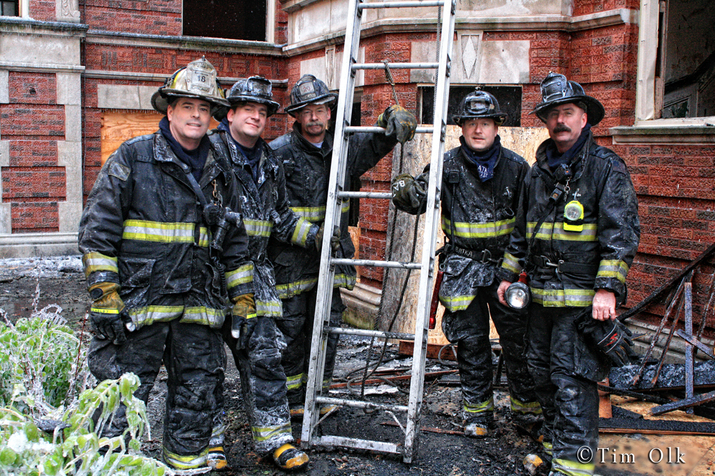 The start of the Volunteer Retention Study sponsored by the Texas Emergency Services Retirement System in partnership with VFIS of Texas and SFFMA has been postponed. According to Michelle Jordan, Executive Director for TESRS, the start date for data collection has been postponed because not enough departments have signed up for a statistically valid sample. Currently, 47 departments have agreed to participate, which is short of the goal by about 120 departments. We’re hoping that a strong push in February will enable a March 1 start date. In addition to a late start, the monthly reporting has been eliminated. The data to be collected has been revised to include current roster numbers and demographics, as well as year-end numbers from the previous five years, and retention strategy information. By eliminating the monthly reporting, the time and effort required to participate has been greatly reduced. Any volunteer fire department in the state can participate, as well as combination departments (only information on the volunteer side will be reported). This study will predict statewide and regional declines over the past five years, as well as provide demographic information that may be helpful. In addition, retention strategy information will be collected and shared. This is an important study to determine whether or not pension programs and other incentives help to retain volunteers in Texas. If you have any questions or would like to participate in this study, please contact TESRS at study@tesrs.texas.gov for more info. Thank you for your interest! AUSTIN, TX – VFIS of Texas and Texas Mutual Insurance Company recently awarded grants of up to $2,500 to 39 volunteer fire departments across Texas. Funds awarded through the Firefighter Safety & Training Grant Program will enable these departments to participate in a certification program and training to support critical workplace safety training.
Fifty-eight volunteer fire departments applied for the grant and the 39 grantees were selected based on their financial needs and the impact the funds would have in their safety and training efforts. VFIS of Texas and Texas Mutual Insurance Company partnered with the State Firemen’s & Fire Marshals’ Association of Texas (SFFMA) to manage the application process and select the grant recipients. “We are very fortunate and thankful to VFIS of Texas and Texas Mutual for this grant, which will help us pay our 2014 annual membership dues to SFFMA,” said Jack K. Rymer, Fire Chief of Possum Kingdom West Side VFD. “This is a very important association that greatly benefits volunteer fire departments such as ours by providing certified training courses and other training programs to make our department safer and more professional. Like many volunteer fire departments, our department is short on resources and this grant money goes a long way in helping us meet our budget.” In addition to Possum Kingdom West Side VFD, the following volunteer fire departments were awarded grants: Bowman Community VFD, Boyd Fire Rescue, China Spring VFD, City of San Diego FD, Clint FD, Cookville VFD, Cottonwood Shores VFD, Crafton VFD, Cresson VFD, Daingerfield FD, Indian Creek VFD, Jamaica Beach VFD, Kaufman VFD, LaRue-New York VFD, Levita FD, Lone Star VFD, Mico VFD, Nevada VFD, Paducah VFD, Pleasant Grove VFD, Rising Star VFD, Rocksprings/Edwards County VFD, Sand Hills VFD, Santa Rosa VFD, Santo Fire and EMS, Six Mile Community VFD, Somervell County Fire, South Ector County VFD, Sunset VFD, Terrell VFD, Tolar VFD, Trout Creek VFD, Turnersville VFD, Village of Pleak VFD, Wayland VFD, Westminster VFD, Whitney VFD and Windthorst VFD. Grantees will be recognized at the SFFMA Conference June 6-11, 2014 in Lubbock, Texas. 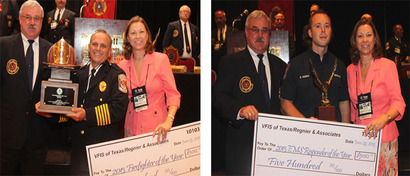 The title of SFFMA State Firefighter of the Year and SFFMA State EMS Responder of the Year are given to only an elite few. To be nominated for these awards and to be selected from so many is quite an honor. Each individual nominated for these awards is recognized for their strong values, leadership, vision, heroism and dedication. Congratulations to all of the nominees and to Dennis Gage, 2013 SFFMA State Firefighter of the Year and to Ed Konick, 2013 SFFMA State EMS Responder of the Year! Click the picture above to see more pics from the event or click HERE. On 10/10/11, SFFMA released two PSAs aimed to continue to help fire departments in the state. Beginning October 10, these PSAs will start playing in various parts of the state on network TV. As part of a grant received from DHS, SFFMA produced a PSA for recruiting and retaining firefighters. The grant paid for the production, camera crews, and airtime in various media networks. At the same time, using the same talent and location, Actor Kyle Chandler did a public service announcement for the Texas Wildfire Relief Fund. Both PSAs will begin running across the state and we hope that they will benefit fire departments in obtaining new members and assisting with wildland firefighting needs.
The videos may be seen here: "We Care" http://www.youtube.com/watch?v=egcTs8oonpY "Become" http://www.youtube.com/watch?v=dW4IV69yTNA Starting in 2011, SFFMA has offered a new optional VFIS Accidental Death & Dismemberment policy to their members. This policy provides a $20,000 benefit for an On-Duty Accidental Death and a $10,000benefit for an Off-Duty Accidental Death. In addition, a $5,000 benefit is paid for a Severe Burn over 20% or more of the body. This policy is offered as an optional member benefit for only $10 per year for each individual member. Accidental death remains the #1 cause of death for working age people and many people do not have adequate life insurance to support their family in the event of their death. For more information on this member benefit, contact Diana Cardona at SFFMA at 800-580-7336.
|
|
|
© 2023 WinStar Insurance Group
13625 Ronald W. Reagan Blvd. Building 3, Suite 100 Cedar Park, Texas 78613 (512) 448-9928 info@vfistx.com |
Home | About Us | Insurance | Training | Life & Health | Resources | Claims | News | Contact Us | Mission & Values | Privacy Statement
|
IMPORTANT NOTE: This Web site provides only a simplified description of coverages and is not a statement of contract. Coverage may not apply in all states. For complete details of coverages, conditions, limits and losses not covered, be sure to read the policy, including all endorsements, or prospectus, if applicable. Coverage CANNOT be bound, amended, or altered by leaving a message on, or relying upon, information in this Website or through E-Mail.
Licensed & doing business in the following states only: Texas, Oklahoma, New Mexico, Arkansas, & Mississippi
Licensed & doing business in the following states only: Texas, Oklahoma, New Mexico, Arkansas, & Mississippi

